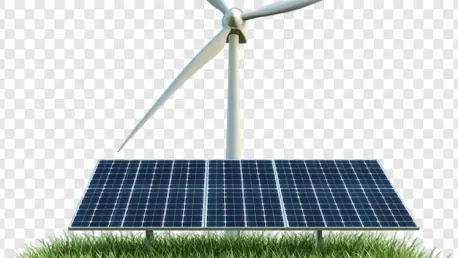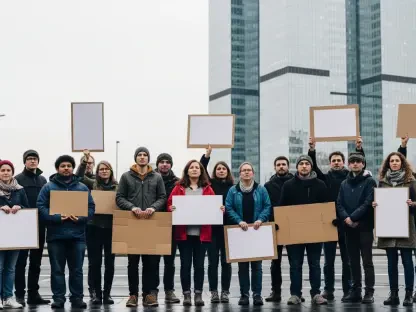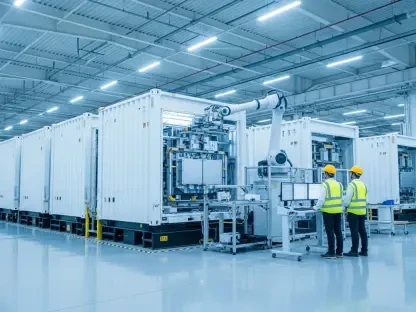Southeast Europe stands on the cusp of a renewable energy revolution. This region boasts significant potential, favorable climatic conditions, and diverse natural resources, making it a promising landscape for advancing clean energy initiatives. Yet, the journey towards realizing this potential is fraught with challenges and requires concerted efforts from governments, private sector players, and international stakeholders. This article explores the various facets of the renewable energy sector in Southeast Europe, as perceived by Sungrow, a global leader in renewable energy solutions.
Renewables Potential in Southeast Europe
Climate and Geographic Advantages
Southeast Europe enjoys a strategic geographic position with abundant solar irradiation, strong wind currents, and ample hydropower capacity. These advantages make the region highly attractive for renewable energy investments. Countries such as Greece, Bulgaria, and Romania have vast solar and wind resources that remain underutilized, presenting ample opportunities for development. The abundance of solar power is particularly noteworthy, as certain parts of the region experience intense sunlight for most of the year, making solar energy a viable and cost-effective option. Additionally, coastal areas experience strong and consistent wind patterns, which are ideal for wind energy generation.
Moreover, the mountainous terrains and numerous rivers offer significant hydropower potential, contributing to the energy mix. The benefit of possessing diverse renewable energy sources is multifaceted; it not only provides the region with a robust foundation for energy independence but also allows for a balanced energy portfolio. Sustainable exploitation of these resources can enhance energy security, reduce reliance on imported fuels, and drive economic growth. The southern regions exhibit notable geothermal potential, providing yet another avenue for energy diversification.
Diverse Natural Resources
Apart from solar and wind, Southeast Europe has significant hydro and biomass resources. The diverse energy mix fosters resilience and energy security, offering investors multiple avenues for sustainable energy projects. Hydropower remains a dominant source of renewable energy in several countries, with long-established infrastructure that can be modernized for enhanced efficiency. The biomass sector, fueled by vast agricultural outputs and forestry resources, offers a sustainable path for local energy production and consumption.
Investing in hydro resources can alleviate seasonal energy fluctuations and provide consistent power supply during periods of high demand. Additionally, the untapped potential of biomass can serve as a valuable asset for rural communities. By leveraging agricultural waste, forestry residues, and energy crops, Southeast Europe can transform its renewable energy landscape while providing socio-economic benefits to its populous. This multifaceted approach not only ensures energy stability but also promotes environmental sustainability.
Technological Innovations Driving Growth
Photovoltaic Systems and Energy Storage
Sungrow emphasizes the critical role of technological advancements in shaping the future of renewable energy. Innovations in photovoltaic (PV) systems have significantly increased their efficiency and reduced costs, making solar projects more viable. Modern PV systems are designed to maximize energy output while minimizing physical footprint, allowing for installations in both urban and rural settings. The integration of advanced materials and smart tracking systems enhances the performance of these installations, contributing to overall energy generation efficiency.
Additionally, energy storage solutions play a pivotal role in balancing supply and demand, ensuring stable energy distribution. The advent of high-capacity batteries and advanced storage technologies allows for the capture and storage of excess energy produced during peak periods. This stored energy can then be utilized during off-peak hours or periods of high demand, thereby stabilizing the grid and enabling a constant power supply. These innovations are crucial for overcoming intermittent generation issues associated with solar and wind energy. Moreover, energy storage systems facilitate the decentralization of energy grids, promoting localized energy solutions that enhance grid resilience and reduce transmission losses.
Smart Grid Technologies
Smart grids represent another revolutionary advancement. These systems enhance the management of energy flow, optimize distribution, and minimize losses. Smart grids incorporate sophisticated monitoring technologies that provide real-time data on energy consumption, generation, and distribution. With intelligent monitoring and predictive maintenance, smart grids can address some of Southeast Europe’s infrastructure limitations. Automated controls and advanced analytics enable seamless integration of renewable energy sources into the existing grid, ensuring efficient utilization of generated power.
The adoption of smart grid technologies in Southeast Europe can transform the energy landscape, making it more dynamic and responsive to consumer needs. These technologies not only enhance operational efficiency but also support the creation of a more resilient and reliable energy network. By facilitating distributed generation and decentralized energy solutions, smart grids contribute to energy independence and sustainability. Furthermore, the infrastructure required for smart grids supports the implementation of advanced energy management systems, enabling optimized power delivery and consumption.
Shifting Market Dynamics
Rising Investments and Cost Reductions
The renewable energy market in Southeast Europe is witnessing transformational changes. Increased investments driven by climate awareness and cost reductions in technologies are bolstering growth. Competitive electricity prices and advanced tech maturity further support this trend. The influx of capital from both private and public sectors signifies strong confidence in the future of renewable energy in the region. These investments are directed towards expanding existing projects, funding new initiatives, and enhancing technological capabilities.
Furthermore, the continuous reduction in technology costs makes renewable projects more financially viable. Innovations in manufacturing processes, material efficiencies, and logistical improvements have collectively brought down the expenses associated with renewable energy installations. As a result, the economic attractiveness of these projects has increased, drawing in more investors and accelerating the pace of development. This trend is likely to continue, fostering a competitive marketplace where innovation thrives and energy solutions evolve rapidly.
Competitive Landscape
Sungrow points to a competitive landscape where local and international companies vie for market share. This intensifies innovation and improvement in service delivery, promoting a healthier, more dynamic market environment. The presence of diverse industry players fosters a culture of continuous improvement, where companies strive to offer superior technologies and services. Such competition drives technological advancements and ensures a steady flow of innovative solutions to meet the growing energy demands.
Local companies, equipped with regional expertise, vie against global giants who bring in advanced technologies and substantial investment capacities. This amalgamation of local insights and international prowess creates a fertile ground for comprehensive growth and rapid sectoral evolution. The competitive environment also encourages collaboration, where companies may form strategic partnerships to leverage collective strengths and resources. By fostering synergies and cooperative ventures, the renewable energy sector in Southeast Europe can achieve significant milestones in technology and market development.
Policy and Regulatory Frameworks
Government Initiatives and Support
Governments in Southeast Europe are progressively rolling out policies to support renewable energy projects. These include subsidies, tax incentives, feed-in tariffs, and ambitious renewable energy targets integrated into national energy strategies. Sungrow advocates for stable policy frameworks, believing that consistent government support is paramount for sector growth. Policy stability ensures a conducive environment for long-term investments and sustained project development.
Subsidies and tax incentives provide the much-needed financial support that can make or break large-scale renewable energy projects. Feed-in tariffs guarantee a fixed price for renewable energy producers, promoting a stable revenue stream. By setting renewable energy targets, governments signal their commitment to transitioning towards cleaner energy sources, providing direction and motivation for the industry. These policies not only attract international investments but also instill confidence among local entities, driving collective efforts towards a renewable energy future.
Overcoming Regulatory Barriers
Despite advancements, regulatory barriers remain an issue. Fragmented and inconsistent regulations can hinder project development. Addressing these hurdles through streamlined policies and regional cooperation is essential for unlocking the region’s full potential. Harmonizing regulatory frameworks across countries can facilitate smoother cross-border collaborations and shared infrastructure projects. Consistent regulations reduce bureaucratic hurdles, enabling faster project approvals and more efficient operations.
Regional cooperation plays a vital role in overcoming these regulatory barriers. By working together, countries can develop mutually beneficial policies that align with collective renewable energy goals. This cooperation can foster a unified approach to tackling challenges and leveraging regional strengths, accelerating the overall progress of renewable energy initiatives. Simplifying regulatory processes and ensuring clarity in legal frameworks enhance investor confidence and contribute to a more robust and resilient renewable energy sector.
Addressing Challenges for Success
Infrastructure Upgrades
To accommodate the influx of renewable projects, Southeast Europe’s existing energy infrastructure needs significant upgrades. Sungrow highlights the importance of modernizing grids and expanding storage capabilities to ensure efficient energy distribution and utilization. Aging infrastructure can impede the optimal functioning of renewable energy plants, necessitating comprehensive modernization efforts. Upgrading transmission lines, substations, and distribution networks is essential for maintaining grid stability and accommodating higher volumes of renewable energy input.
Expanded storage capabilities are crucial for addressing intermittency issues and ensuring continuous power supply. Advanced storage solutions, such as high-capacity batteries, pumped hydro storage, and compressed air energy storage, can balance energy generation and consumption effectively. These upgrades not only enhance grid efficiency but also support decentralized generation, where localized energy production and consumption contribute to overall energy resilience. Modernizing infrastructure aligns with technological advancements, creating a compatible and innovative energy ecosystem.
Financing and Skilled Labor
Access to financing is another critical challenge. Sungrow underscores the need for diversified funding sources, including international investments and public-private partnerships. The substantial upfront costs of renewable projects require robust financial support, encompassing various funding avenues. International investors bring capital and global expertise, while public-private partnerships leverage collective strengths and mitigate financial risks. Innovative funding mechanisms, such as green bonds and climate financing, are pivotal in mobilizing resources for large-scale projects.
Moreover, enhancing technical skills and expertise through education and training programs is vital for successful project implementation. A skilled workforce ensures effective project execution, maintenance, and technological innovation. Investing in education and specialized training programs can bridge the skill gap and prepare the labor market for the demands of the renewable energy sector. By fostering a proficient workforce, Southeast Europe can achieve higher efficiency in project implementation and sustain its competitive edge in the global renewable energy market.
Positive Environmental and Social Impact
Environmental Benefits
Renewable energy projects offer substantial environmental benefits, including reduced greenhouse gas emissions and improved air quality. These efforts are pivotal in combating climate change and fulfilling international commitments. By shifting from fossil fuels to clean energy sources, Southeast Europe can significantly lower its carbon footprint, contributing to global sustainability goals. Reduced emissions improve public health and mitigate the adverse effects of climate change, fostering a healthier living environment.
The transition to renewable energy also supports biodiversity conservation and environmental restoration. Reduced reliance on mining and drilling activities preserves natural habitats and minimizes ecological disturbances. Through sustainable practices and responsible management, renewable energy projects coexist harmoniously with the environment, demonstrating a commitment to ecological balance and long-term sustainability. These environmental benefits reinforce the value of renewable energy initiatives as integral components of regional and global environmental strategies.
Socio-economic Contributions
Southeast Europe is on the verge of a renewable energy breakthrough. The region holds substantial potential due to its favorable climatic conditions and diverse natural resources, positioning it as a promising area for advancing clean energy projects. However, achieving this potential is laden with challenges and necessitates strong collaboration among governments, private sector entities, and international stakeholders. This piece delves into the many aspects of the renewable energy landscape in Southeast Europe, as viewed by Sungrow, a global leader in renewable energy solutions. According to Sungrow, the region’s transition to renewable energy involves not just leveraging its natural assets but also requires policy support, infrastructure investments, and innovative technologies. Overcoming these obstacles is essential for Southeast Europe to fully harness its renewable energy capabilities and contribute to global sustainability efforts.









